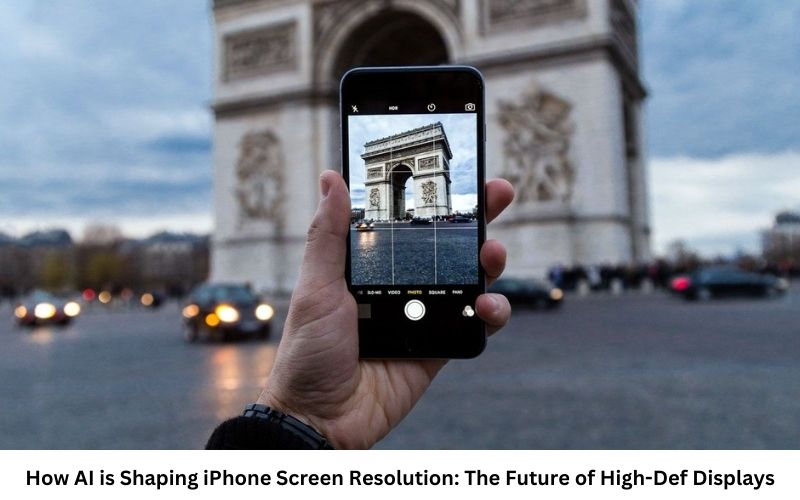Unlocking the Secrets of iPhone Screen Resolution: The Ultimate Guide for 2024
When it comes to smartphones, screen resolution plays a crucial role in the user experience. As Apple continues to innovate, the iPhone’s screen resolution has consistently evolved, offering clearer and more vibrant displays. In this ultimate guide, we will delve into the intricacies of iPhone screen resolution, highlighting the latest advancements and what they mean for you.
What is Screen Resolution?
It is usually denoted in terms of width x height (e.g., 1920 x 1080).For iPhones, screen resolution has seen significant enhancements over the years, making each new model more impressive than the last.
The Evolution of iPhone Screen Resolution
The Early Years
The first iPhone, released in 2007, featured a screen resolution of 320 x 480 pixels. While modest by today’s standards, it set the stage for future developments. The iPhone 3GS improved slightly, but the real leap came with the iPhone 4 in 2010, which introduced the Retina Display with a resolution of 640 x 960 pixels. This marked a significant shift, as Apple focused on delivering a display with a pixel density high enough that individual pixels were indistinguishable to the human eye.
Retina to Super Retina
The Retina Display was a game-changer, but Apple didn’t stop there. The iPhone 6 Plus, released in 2014, featured a 1080 x 1920 resolution, marking the first time an iPhone offered Full HD. With the introduction of OLED technology in the iPhone X, Apple unveiled the Super Retina Display, boasting a resolution of 1125 x 2436 pixels. OLED technology brought deeper blacks and more vibrant colors, significantly enhancing the visual experience.
The Modern Era: Pro Display XDR
Apple continues to push boundaries with the Pro Display XDR in the latest iPhones, like the iPhone 13 Pro. This display offers a resolution of 2532 x 1170 pixels for the standard model and 2778 x 1284 pixels for the Pro Max. The Pro Display XDR technology introduces a new level of brightness, color accuracy, and contrast, making it perfect for professional-grade photo and video editing.
Understanding PPI (Pixels Per Inch)
Pixels per inch (PPI) is a critical measure of screen resolution. It indicates the pixel density of a display, with higher PPI values resulting in sharper images. The iPhone 4’s Retina Display had a PPI of 326, which has become the baseline for Apple. The iPhone 13 Pro Max, for example, has a PPI of 458, offering an incredibly sharp and detailed viewing experience.
How Screen Resolution Impacts Your Experience
Gaming
Higher screen resolution enhances the gaming experience by providing more detailed graphics and smoother gameplay. Games optimized for the latest iPhone resolutions look stunning and perform better, making the device a preferred choice for mobile gamers.
Photography and Videography
For photography and videography enthusiasts, screen resolution is crucial. Higher resolution screens allow you to see more details in your photos and videos, making editing more precise. The Pro Display XDR on the latest iPhones ensures that what you capture is displayed in the best possible quality.
Everyday Use
Even for everyday tasks like browsing the web, reading emails, or watching videos, a higher screen resolution can make a noticeable difference. Text appears sharper, images look more vibrant, and videos are more enjoyable to watch.
Future Trends in iPhone Screen Resolution
Apple is known for its innovation, and the future of iPhone screen resolution looks promising. Rumors suggest that upcoming models might feature even higher resolutions and advanced display technologies like MicroLED. MicroLED promises better energy efficiency and improved brightness, taking the iPhone’s visual experience to new heights.
Enhanced Learning and Training
In educational and training settings, AR can provide interactive learning experiences. With a high-resolution iPhone screen, students and trainees can view detailed 3D models and interactive simulations that enhance understanding and retention. Whether it’s medical students exploring anatomy or engineers visualizing complex machinery, the clarity and detail provided by the iPhone’s screen resolution make these experiences more effective.
Creative and Practical Applications
Artists and designers benefit from the high resolution when creating AR content, as it allows for finer details and more accurate color representation. Practical applications, such as home decor apps that let you visualize furniture in your space, also rely on screen resolution for precise placement and realistic rendering. As AR technology evolves, having a high-resolution iPhone ensures you can fully engage with these innovative applications.
Conclusion
Understanding iPhone screen resolution is essential for appreciating the advancements in display technology. From the early days of the original iPhone to the latest Pro Display XDR, each improvement has enhanced the user experience. As Apple continues to innovate, we can expect even more impressive developments in the future. Stay tuned for the latest updates and ensure your iPhone experience remains unparalleled.




